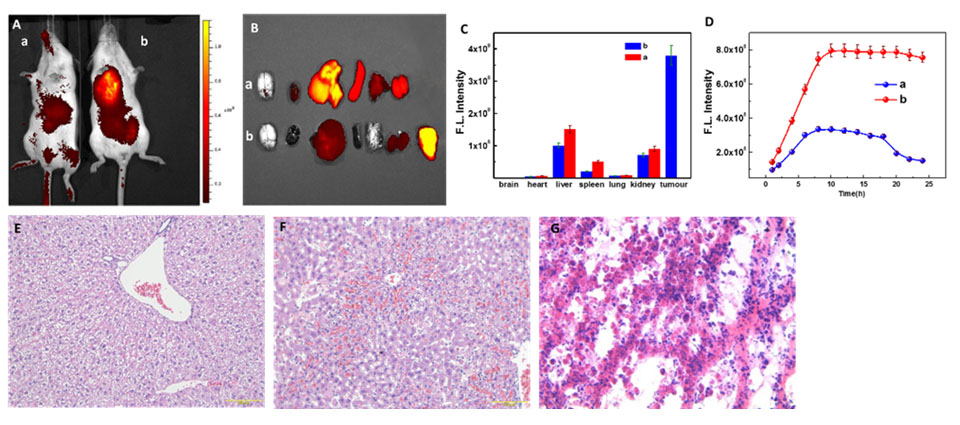博文
Probe for Superoxide and Hydrogen Polysulfides in vivo
|
H2S plays important physiologicaland pathological roles in the cardiovascular system and nervous system.However, recent evidence imply that hydrogen polysulfides (H2Sn) are the actualsignaling molecules in cells. Although H2Sn have been demonstrated to beresponsible for mediating tumor suppressors, ion channels, and transcriptionfactors, more of their biological effects are still need to be elaborated. Onone hand, H2Sn have been suggested to be generated from endogenous H2S uponreaction with reactive oxygen species (ROS). On the other hand, H2Snderivatives are proposed to be a kind of direct antioxidant againstintracellular oxidative stress. This conflicting results should be attributedto the regulation of redox homeostasis between ROS and H2Sn. Superoxide anion(O2•−) is undoubtedly the primary ROS existing in mitochondria. We reason thatthe balance of O2•− and H2Sn are pivotal in physiological and pathologicalprocesses. Herein, we report two near-infrared fluorescent probes Hcy-Mito andHcy-Biot for the detection of O2•− and H2Sn in cells and in vivo. Hcy-mito isconceived to be applied in mitochondria, and Hcy-Biot is designed to targettumor tissue. Both of the probes were successfully applied for visualizingexogenous and endogenous O2•− and H2Sn in living cells and in tumor micemodels. The results demonstrate that H2Sn can be promptly produced bymitochondrial oxidative stress. Flow cytometry assays for apoptosis suggestthat H2Sn play critical roles in antioxidant systems.



Near-Infrared Fluorescence Probe for in Situ Detection of Superoxide Anion and Hydrogen Polysulfides in Mitochondrial Oxidative Stress
Yan Huang, Fabiao Yu,* Jianchao Wang, and Lingxin Chen*
Anal. Chem., 2016, DOI: 10.1021/acs.analchem.6b00458
http://pubs.acs.org/doi/abs/10.1021/acs.analchem.6b00458
https://blog.sciencenet.cn/blog-2438823-961522.html
上一篇:Near-Infrared Fluorescent Probe for Detection of Nitroxyl
下一篇:Quantification of CysSSH based on selenium-sulfur exchange
全部作者的其他最新博文
- • Near-infrared II fluorescent probe for lung metastatic tumor
- • Metabolic Acidity/H2O2 Dual-Cascade Activatable Probe
- • Mitochondrial Fluorescent Probe for Hypochlorite and Sulfur
- • two-photon fluorescent probe for HClO detection in inflammat
- • peroxynitrite elevation in zinc ion-induced lung injury
- • H2O2-Activatable Bodipy for Type I/II Photodynamic Therapy